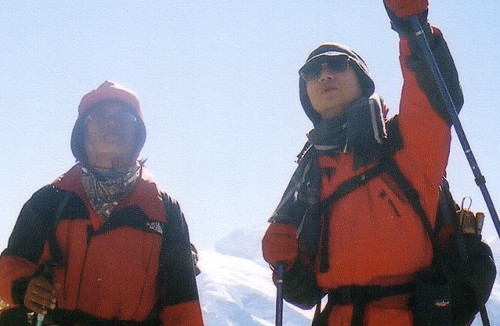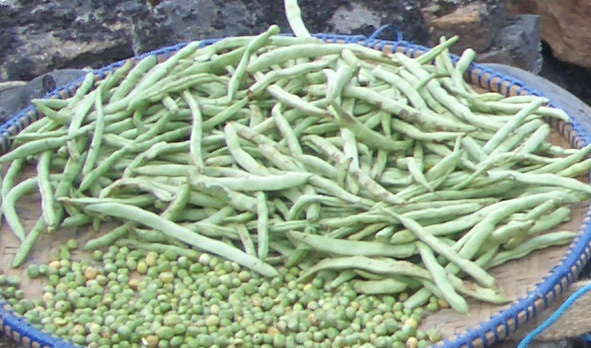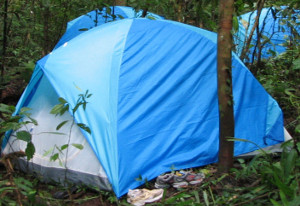
Forest trail in Malaysia |
Peninsula Malaysia offers a variety of treks for outdoor lovers with lowland national parks, waterfall, mountains and caves. The highest mountain in Peninsular Malaysia is Gunung Tahan standing at 2178 m and it is one of the best treks in Malaysia that combines physical and mental endurance and beautiful sceneries. For the goal-driven trekkers, try completing the G7 (Great-seven) of Peninsular Malaysia which is the seven highest mountains. Most treks in Malaysia are on trails without any markings. It is important to hire a guide or get someone with experience to lead the trek. For some treks, the starting point may only be reached using four-wheel drive and it can take five days or more to cover the distance. There are usually no porter services for the treks although it is available for Gunung Tahan.
Climate
Singapore and Malaysia are tropical countries and the weather is very humid. Be prepared to be drenched in perspiration within minutes of the trek. Afternoon and evening storm is also common throughout the year with higher frequency during the monsoon season which is between October and March. The monsoon has a greater impact on the eastern part of Malaysia and floods are common. In December 2014, more than 160,000 victims are evacuated in Kelantan, Pahang, Terengganu and others.
Trekking in the rain is generally fine as the surrounding temperature still stays above 20 °C and there is no risk of hypothermia. However, it is advisable to change into dry clothes after you have set up camp for the night. Gore-tex jacket will not keep you dry due to the high humidity outside which restricts the movement of water vapor from the inside-out although it will be more comfortable than impervious raincoat.
Terrain
Malaysia treks are typically on dirt path created by regular human traffic. The routes are generally not maintained and it is common to see side trails. On mountain treks, the trail typically follows the ridgeline and on path created by elephants especially on the remote Titiwangsa range. Bushes and palms with thorns are common along the side of the trail which demands mental alertness when going up or down steep sections.
Apart from treks in the national parks, most other treks will take you through oil palm or rubber plantations, secondary forests and disused logging trails. Many of the forests have seen logging activities in the past and you may be walking on dirt road which was once used by logging trucks. However, as many of these roads are not maintained, they are no longer passable by vehicle and you may have to walk on it for long stretches. On these roads, it can get very hot as there are no tree covers.
Despite being a tropical country, you will get to see changes in the vegetation higher up on mountain treks. At 500 m above sea level, you may start to notice the tree trunks getting thinner and the trees shorter. Higher up beyond 1500 m, the trees may be replaced by tall bushes and mossy forests. The trails at such altitude may get very muddy as the weather is cool, misty and wet. Although Malaysia is a tropical country with sea level temperature ranging from 24 to 34 °C, temperature on the mountain can easily drop below 20 °C at night especially above 1000 m.
On some treks, there may be sections where you need to climb over rocks and boulders. The ropes if any that are tied to these steep sections are not tested for safety. These are usually left behind by other trekkers so give a few strong tugs to check whether it is secured if you are going to use it.
Guides
Guides in Malaysia are generally competent in leading the way but do not expect them to introduce the forest. It may be due to language barrier as most of them only know how to speak Malay language. However, you may still be able to find some guides who knows English well enough for light conversations. Do not expect the guides to help you with carrying of gears and setting up of camp.
Blood suckers
Leeches, mosquitoes and sandflies are the most commonly encountered blood sucking animals on the forest trek. In primary forests, mosquitoes are less often encountered but you may be greeted by terrestrial leeches. Mosquitoes are almost always encountered in disturbed forests and plantations while sandflies may be present in some campsites. Diseases spread by leeches and sandflies are rarely heard of in Peninsula Malaysia. Malaria is also uncommon but outbreaks of dengue fever which is spread by mosquitoes are rather common. However, these outbreaks are often restricted to populated regions and not in forests.

Fresh elephant dung on the trail. |
Nature and wildlife
Most wild animals are shy and are quick to avoid human contacts. Large animals such as elephants and tigers are still found in the National Parks and the major forests of Pahang, Perak, Kelantan and Terengganu1. On treks to mountains on Gunung Tahan which sits in Taman Negara National Park and along the main (Titiwangsa) range, it is common to find elephant dung along the trail especially along the ridgeline above a thousand meters.


